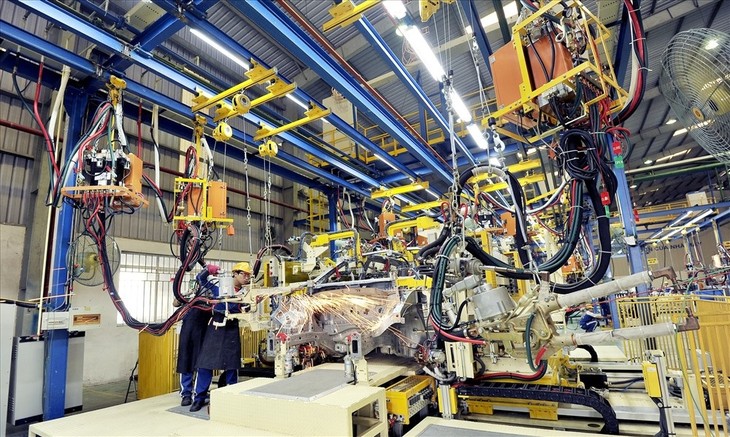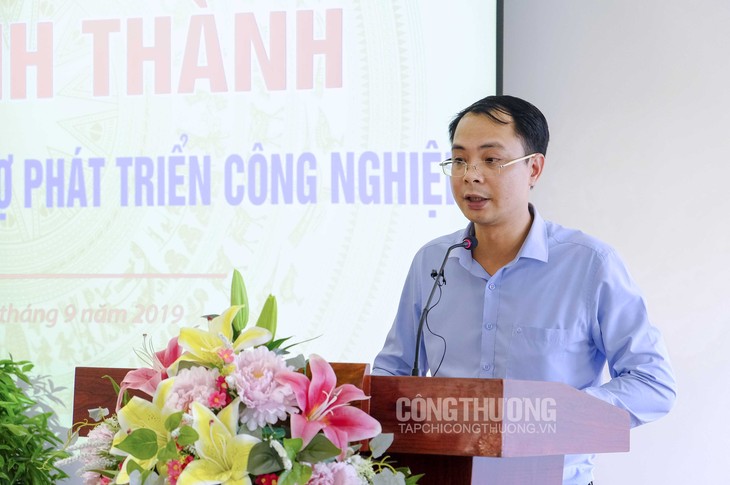(VOVWORLD) - Despite COVID-19, Vietnam’s industrial production grew nearly 9% in the first 6 months of this year. To ensure production and trade until the end of the year, the sector has focused on safely coexisting with the pandemic by complying with Government regulations.
 (Photo: thoibaonganhang.vn) (Photo: thoibaonganhang.vn) |
Industrial growth in the first half of the year contributed more than 3% of national economic growth. Processing and manufacturing made up 11.4% of that and electricity production and distribution 8.2%. The sector’s growth has been boosted by the recovery of production and trade by enterprises.
To achieve the dual goal of containing COVID-19 and ensuring economic development, the Ministry of Industry and Trade has developed a map of how to safely coexist with the epidemic.
Ngo Khai Hoan, Deputy Director of the Ministry’s Industry Department, said each industrial facility must assess its own safety, outline plans to maintain production at any level of the epidemic, and apply prevention and control measures to ensure an undisrupted production chain.
“Two online training programs were held in May and June to help production facilities conduct safety assessments as recommended by the National Steering Committee for COVID-19 Prevention and Control,” said Hoan.
 Ngo Khai Hoan, Deputy Director of the Industry Department (Photo: tapchicongthuong.vn) Ngo Khai Hoan, Deputy Director of the Industry Department (Photo: tapchicongthuong.vn) |
Economists say industrial development in the last 6 months of the year will largely depend on Vietnam's response to the epidemic.
The Ministry of Industry Department will continue to closely monitor the operation of industrial zones nationwide and offer advice on epidemic prevention and control measures to ensure production and business growth.
It will also work with other ministries and sectors to design policies and solutions to develop specific industries such as automobiles, textiles and garments, leather and footwear, electronics, minerals, and auxiliary products.
Particular emphasis will be put on restructuring production chains to make industrial production more sustainable, avoiding dependence on just a few partners or markets, according to Deputy Director Hoan.
He called for the “need to increase inspection and monitoring and take steps to combat speculation, hoarding, and manipulation of raw materials for domestic production in order to stabilize the market and support business growth.”
“We also need to promote trade activities, develop the domestic market and e-commerce, connect manufacturers and distributors, and boost export promotion activities to maintain and expand markets for manufacturing industries. Finally, we need to finalize a policy on industrial development this year that is focused on fundamental industries and the support industry and create a mechanism for industrial development next year,” Mr Hoan said.
The Ministry, local departments, and sectors are keeping a close eye on changes in supply, demand, and prices of essential commodities, promoting exports, and taking advantage of opportunities created by free trade agreements to penetrate new markets.